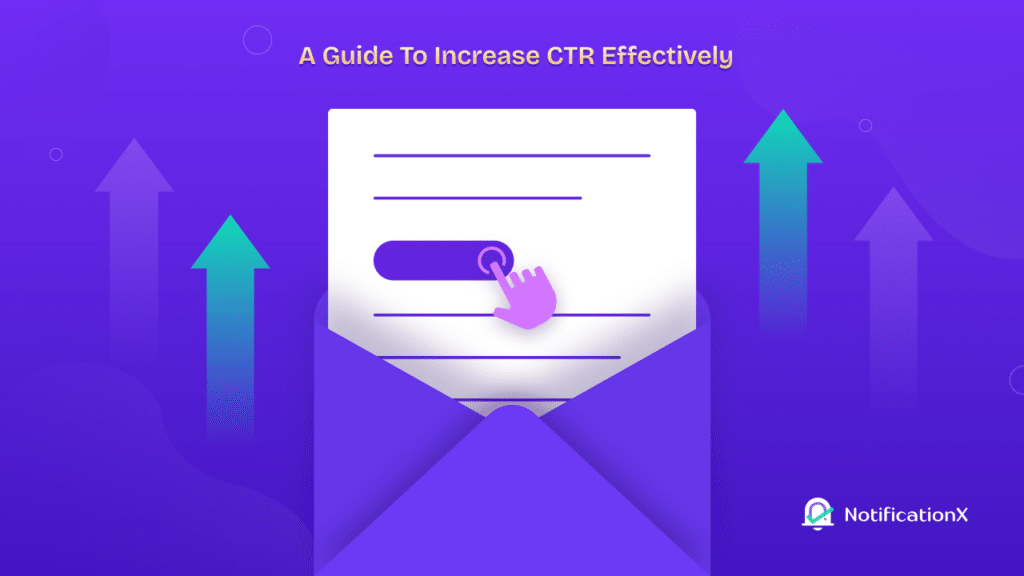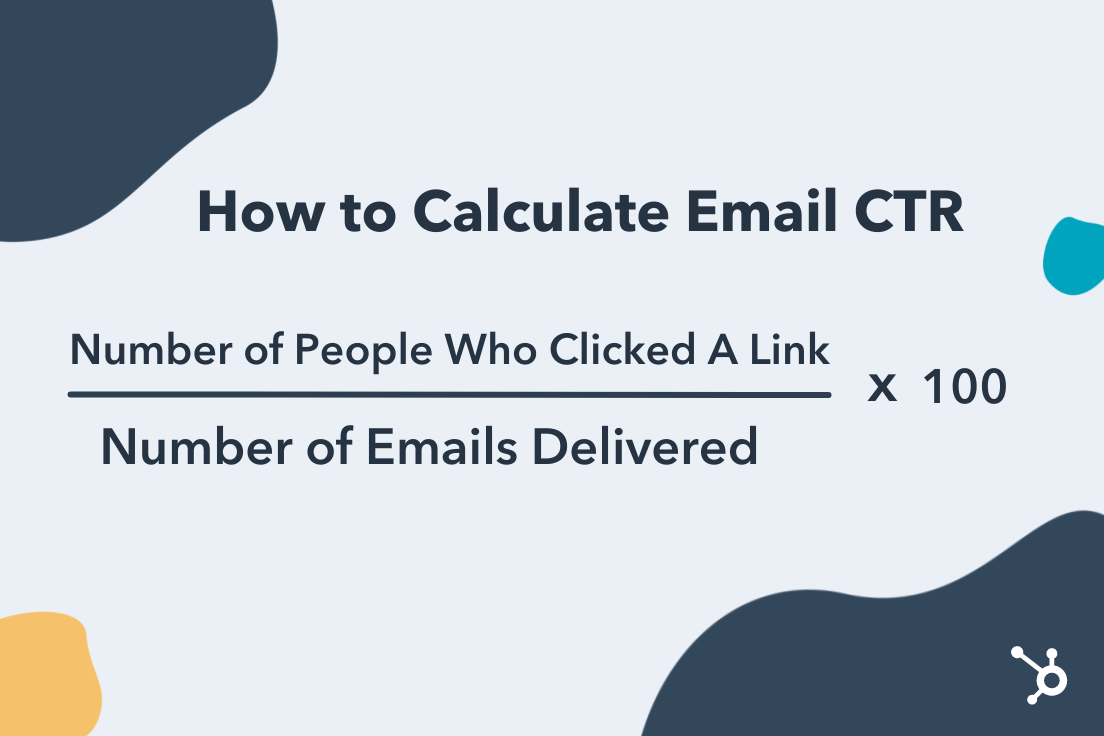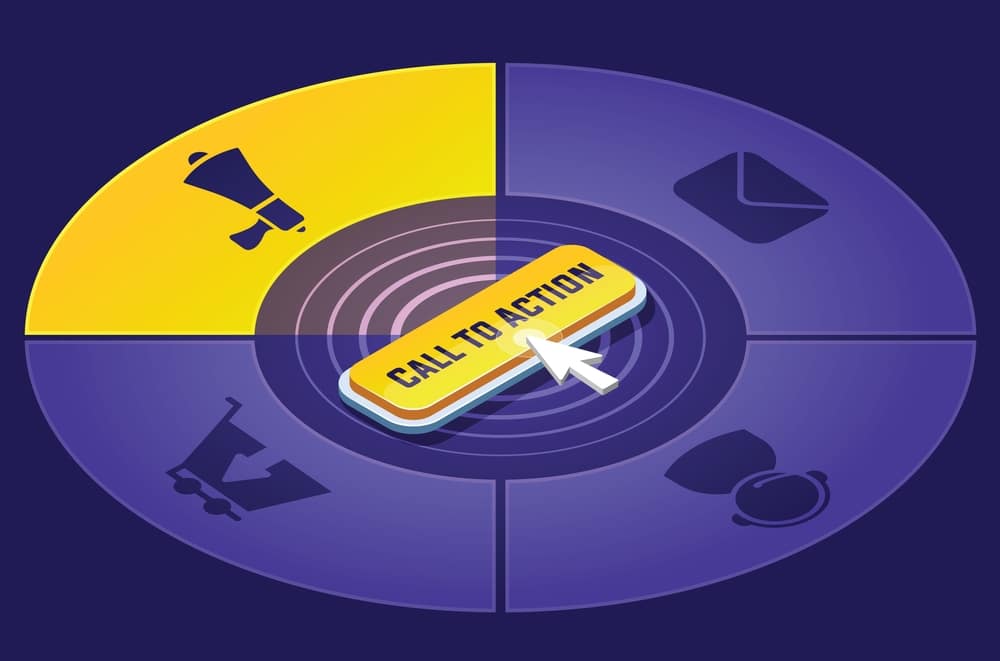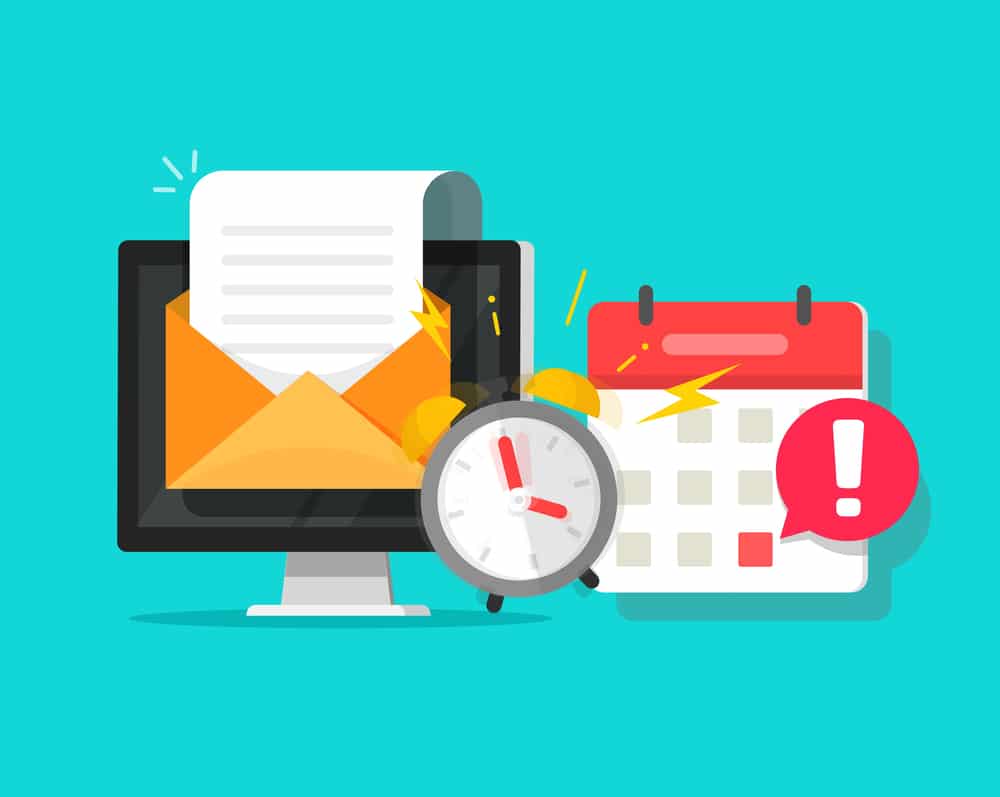Welcome to the world of email marketing, where one important number is the Click-Through Rates (CTR). This number helps us see how well our emails work – are people clicking on our links and taking action? Today, we will explore 5 powerful strategies to effectively increase Email Click-Through Rates (CTR).

At the end of reading this blog, you should have a comprehensive idea of what is Email Click-Through Rates. Along with that, you will also have a clear understanding of what is the ideal Email Click-Through Rates for different emails, how to calculate it, and 5 effective ways you can follow to boost your Email Click-Through Rates.
You want the recipients not only to open your emails but to click and explore further, right? If yes, come with us and go through this blog to improve your CTR and make your emails work even better. Let us get started.
What Is Email Click-Through Rates?
Email Click-Through Rates (CTR) serve as a fundamental metric in email marketing. It essentially measures how successful your email campaigns are at getting recipients to interact with your message. Imagine it as a tool that helps you gauge how many of your email recipients were not only drawn in by your message but were also curious enough to click on any call-to-action buttons or the links embedded within your email content.
In simpler terms, CTR reveals the engagement level of your audience. It is represented as a percentage, which makes it easy to understand. This percentage essentially tells you what portion of your email recipients thought your message was interesting enough to delve further into it. This is often used as a Key Performance Indicator (KPI) by email marketers to assess the success of their campaigns. A higher CTR suggests that your emails are hitting the mark, driving traffic, and generating conversions.
However, if your CTR is on the lower side, it is an indicator that your email content or calls to action may not be resonating with your audience as they should. High CTR, conversely, signifies that your emails are both relevant and engaging. It is a dynamic metric that requires ongoing attention, offering room for improvement. Experimenting with different subject lines, content, and call-to-action elements can help you optimize your email campaigns and achieve better results for your business. In essence, Email CTR boils down to making connections with your audience and inspiring them into action.
How To Calculate The Email Click-Through Rates?
Now that you know what is click-through rates, the next step is to learn how to calculate the email CTR properly.
If you have questions like, “Are click-through rates calculated based on subscribers or people who open the email?”, this section should help you get your questions answered.
Calculating Email Click-Through Rates (CTR) is a straightforward process. It is an essential step in understanding how effective your email campaigns are at engaging your audience. Here is how you can calculate it.
To find your CTR, you need two numbers: the number of unique clicks your email received and the number of delivered emails (i.e., the emails sent minus bounces). Let us break it down:
- Count Your Clicks: First, you need to tally the number of unique clicks in your email. This means that if one person clicks on multiple links in the same email, it is still counted as one unique click. Email marketing platforms provide this information for you.
- Determine Delivered Emails: Calculate the number of emails that were successfully delivered to your recipients’ inboxes. This excludes emails that bounced or were marked as spam.
- Plug in the Numbers: Now, you simply divide the number of unique clicks by the number of delivered emails.
Formula: CTR = (Unique Clicks / Delivered Emails) x 100%
For instance, if your email garnered 100 unique clicks and you sent out 1,000 emails that successfully reached the inbox, your CTR would be:
CTR = (100 / 1,000) x 100% = 10%
Your CTR is then expressed as a percentage, which tells you the proportion of your recipients who engaged with your email by clicking on its links.

The higher the CTR, the more engaging and effective your email campaign is at driving interactions. And remember, monitoring this metric and making adjustments as needed is a key step in boosting your email marketing success.
What Is The Ideal Click-Through Rates For Email?
The ideal Email Click-Through Rates (CTR) can vary depending on factors such as your industry, the type of email campaign, and your specific audience. However, as a general guideline, a good CTR typically falls in the range of 2% to 5%.
Below 2%: A CTR below 2% could indicate that your email campaign might need some improvement. It suggests that your email content or calls to action may not be resonating effectively with your audience.
2% to 5%: Falling within this range is considered a healthy CTR. It indicates that a decent percentage of your recipients are engaging with your email content, clicking on links, and taking desired actions.
Above 5%: If your CTR is consistently above 5%, that is excellent. It suggests that your email campaigns are highly effective at engaging your audience and your content is resonating well with your subscribers.
Keep in mind that what is considered a “good” CTR can vary widely across different industries. For example, industries with highly engaged and specialized audiences, like hobbies or niche interests, might have higher CTR expectations. Conversely, industries with more general and less engaged audiences may have lower typical CTRs.
5 Effective Ways To Increase Email Click-Through Rates
Now that you know the definition of Email CTR, the ideal CTR, and how to calculate the CTR correctly, it is time to learn the strategies and best practices to increase your email CTR. If you follow the tips we are going to share below, you can expect to see a remarkable change in click-through rates for your future email campaigns.
Craft Compelling Subject Lines

If you ask us, “What is one common cause of low click-through rates?” Our answer will be boring subject lines. Crafting persuasive subject lines is a pivotal step in boosting your Email Click-Through Rates (CTR). It is often the first thing your recipients see and plays a crucial role in their decision to open your email. Follow the rules below for crafting subject lines that entice your audience.
Keep It Concise And Clear: Start by keeping your subject line concise and to the point. Aim for clarity. A subject line should provide a clear idea of what the email contains. Avoid using overly long or cryptic subject lines.
Create Curiosity: Make your recipients curious. A well-crafted subject line can pique their interest without revealing everything. For example, use open-ended questions or tease a valuable offer to spark curiosity.
Personalization Matters: Personalized subject lines can be highly effective. Include the recipient’s name or tailor the subject line based on their preferences or past interactions with your emails. This personal touch can make your emails feel more relevant.
Use Actionable Language: Use action-oriented words that prompt recipients to take action. Words like “Discover,” “Get Started,” or “Exclusive Offer” can encourage clicks.
Urgency And FOMO: Incorporate a sense of urgency or fear of missing out (FOMO) in your subject lines when appropriate. Phrases like “Limited Time Offer” or “Last Chance” can create a sense of urgency.
Test And Refine: Do not stick to one subject line formula. Test different variations and see which ones perform best. A/B testing subject lines can help you understand what resonates with your audience.
Avoid Spammy Tactics: Avoid using excessive capitalization, excessive punctuation, or words that trigger spam filters. These can harm your deliverability and CTR.
Crafting compelling subject lines is an art that requires practice and testing. The key is to understand your audience, experiment with different approaches, and pay attention to what works best.
Add A Clear Call to Action (CTA)

When it comes to boosting your Email Click-Through Rates (CTR), one of the most critical elements is a clear and compelling call to action (CTA). Crafting a CTA that is easy for your audience to understand and act upon is key to increasing engagement with your email content.
First of all, be very explicit in your CTA, leaving no room for confusion. Use clear, action-oriented words like “Shop Now,” “Learn More,” or “Get Started” to tell the recipient exactly what you want them to do.
Next, make your CTA stand out visually by using a color that contrasts with the background. This helps draw the recipient’s attention to the action you want them to take. If your CTA is in the form of a button, make sure it looks like a button. Use a 3D effect, shadow, or bold styling to make it appear clickable.
And do not forget that the placement of your CTA matters. It is often effective to place it near the top of your email so that it is visible as soon as the recipient opens the email. However, you can also use multiple CTAs strategically throughout the email if it is a longer message. In most cases, it is best to focus on one primary CTA in your email. While you can have secondary CTAs, having a singular, clear primary action makes it easier for recipients to decide.
While inviting the recipients to act, explain what is in it for them. Why should they click? Make sure your CTA is accompanied by a brief statement that highlights the benefit of taking the desired action.
Last but not least, A/B testing different CTAs and their placement can help you determine what resonates best with your audience. Continuously refine your CTAs based on performance.
By incorporating these CTA optimization strategies into your email campaigns, you can make it crystal clear to your recipients what action you want them to take.
Optimize Emails For Mobile Devices

Nowadays, mobile devices have become the primary means of accessing emails. To increase your Email Click-Through Rates (CTR), it is crucial to ensure your emails are mobile-friendly. Below are the steps you should follow to make your emails easily readable by mobile users:
1. Responsive Design: When crafting your emails, prioritize responsive design. This means that your email layout automatically adjusts to fit various screen sizes. It ensures that your message looks great and functions well on both large and small screens.
2. Keep It Simple: Mobile screens are smaller, so simplicity is your ally. Avoid cluttered layouts, excessive text, and too many images. Streamline your content to deliver a clear and concise message that is easy to read and understand on a mobile device.
3. Font And Text Size: Choose fonts and text sizes that are easy to read on smaller screens. A font size of at least 14 pixels is a good starting point. Make sure the text is legible without zooming in.
4. Touch-Friendly Buttons: If your email contains buttons or calls to action, make sure they are large enough to tap easily with a finger. Small, hard-to-click buttons can frustrate mobile users and lead to a drop in CTR.
5. Scannable Content: Break your content into smaller, scannable sections. Use headings, subheadings, and bullet points to make it easy for mobile users to grasp your email’s key points quickly.
6. Preheader Text: The preheader text is the snippet of text that appears next to or just below your subject line. Use this space wisely to offer a glimpse of what your email contains and entice recipients to open it.
7. Testing Is Key: Always test your emails on various mobile devices and email clients to ensure they look and function as intended. Testing helps you find any issues before sending your campaign.
Optimizing emails for mobile devices is an essential part of boosting your CTR.
Timing Is Super Important
The timing does matter a lot in enhancing your Email Click-Through Rates (CTR). It is all about sending your emails at the right moment to maximize recipient engagement. Here is why timing matters with some statistics and best practices.
The Best Days To Send
Statistically, Tuesday is often considered the best day to send emails, with an average open rate of 18.3%.
Thursdays are close behind, with a 15.6% average open rate. However, the ideal day can vary depending on your specific audience. So, testing is crucial.
Time of Day
Mornings, between 9 AM and 11 AM, tend to be optimal for higher open and CTR rates.
Afternoons from 2 PM to 5 PM are also good times to consider, as people may check their emails during work breaks.
Time Zones
Be mindful of your audience’s time zone. Sending your emails when they are most likely to be checking their inbox ensures better engagement. To find out the exact time zone of your audience, you can use any time zone converter tool.
Consistency
Maintaining a consistent sending schedule helps build anticipation and can improve CTR over time.
Holidays And Special Occasions
Take advantage of holidays and special occasions relevant to your audience, as they often provide opportunities for increased engagement.
Timing is not a one-size-fits-all approach. It is essential to understand your audience’s behavior and preferences. Monitoring email analytics and conducting A/B testing can help pinpoint the best timing for your specific email marketing campaigns.
Include P.S. Section

Email click-through rates can be improved by including a P.S. (postscript) section in your sent emails. It is a user-friendly way to convey your entire message in 1 sentence and prompt action. So, why does the P.S. section matter and what are the best practices? Let us explore.
Firstly, a well-crafted P.S. reiterates the main point of your email, reminding readers of the value of your offer. Secondly, you can use the P.S. to inject a sense of urgency by mentioning limited-time offers or deadlines. Thirdly, many recipients skim through emails. A P.S. can provide clarity on what you want them to do.
Make sure you follow the best practices to include a P.S. section:
- Keep it concise and clear, summarizing the email’s key point.
- Use action-oriented language to prompt clicks.
- Highlight the benefit of taking the desired action.
Start Getting Better Email Click-Through Rates (CTR)
In the world of email marketing, increasing Click-Through Rates (CTR) is all about connecting with your audience in a clear as well as compelling way. By focusing on crafting engaging subject lines, optimizing emails for mobile devices, using clear calls to action, considering the timing of your email sends, and leveraging the power of a well-placed P.S., you can make your email campaigns more effective.
Remember, email marketing is both an art and a science. It is about understanding your audience, testing what works, and consistently refining your approach. With these strategies in your toolkit, you are well on your way to boosting CTR and achieving your email marketing goals. Subscribe to our blog to get blogs like this in your inbox.







